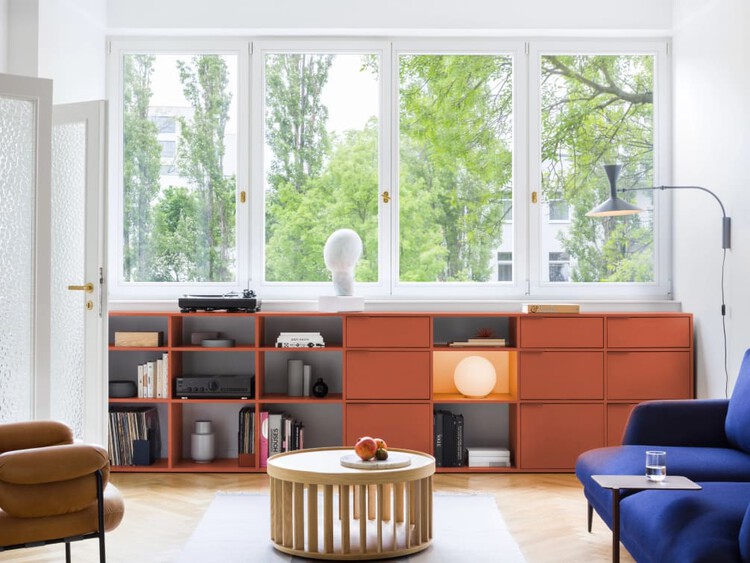 Conversion-Focused Landing Pages – More Leads, Less Bounce!
Conversion-Focused Landing Pages – More Leads, Less Bounce!
Revolutionizing E-Commerce Furniture through Breakthrough Innovations
Written by Mantra » Updated on: June 17th, 2025 117 views


Introduction:
The e-commerce furniture industry has experienced explosive growth in recent years, driven by a combination of changing consumer behavior, technological advancements, and a desire for convenience. Today, consumers can browse, customize, and order furniture online from the comfort of their homes, with the added benefit of a seamless shopping experience.
Innovations in technology, such as 3D printing, Artificial Intelligence (AI), and virtual reality (VR), have further transformed the landscape of e-commerce furniture. These breakthroughs are redefining the way consumers shop for furniture, enabling new levels of customization, sustainability, and efficiency. This article will explore the role of technological innovations in revolutionizing the e-commerce furniture industry, with a particular focus on 3D printing and its impact on mass customization.
The Rise of E-Commerce in the Furniture Industry
Over the past decade, e-commerce has become a dominant force in the retail sector, with furniture being one of the fastest-growing categories. Online shopping has proven to be a more convenient, efficient, and often cost-effective option for consumers. Furniture, traditionally a category requiring physical inspection due to its size and nature, has increasingly found a new home in digital retail.
This shift has been accelerated by advancements in digital technology, improving how furniture is designed, manufactured, and delivered. Online platforms allow customers to browse extensive catalogs of furniture from various brands, compare prices, and even visualize how pieces will fit in their homes—all from a computer or smartphone.
Furthermore, e-commerce enables greater accessibility to a global market. Consumers are no longer limited to shopping at local brick-and-mortar stores; they can now purchase furniture from international brands and have it delivered to their doorstep. This shift has fundamentally altered the way people interact with the furniture market, leading to new opportunities for both buyers and manufacturers.
3D Printing in E-Commerce Furniture: Redefining Mass Customization
One of the most groundbreaking innovations to emerge in the e-commerce furniture industry is 3D printing. 3D printing, also known as additive manufacturing, enables the creation of highly customized furniture pieces with intricate designs that would be difficult or impossible to produce using traditional manufacturing methods.
In the context of e-commerce, 3D Printing allows for a level of mass customization that was previously unattainable. Consumers can now order furniture pieces tailored to their exact specifications—whether it’s size, shape, color, or material. This level of personalization has revolutionized the concept of “mass customization,” enabling manufacturers to offer made-to-order furniture at a larger scale.
Unlike traditional manufacturing processes, which often involve large-scale production runs of a single design, 3D printing builds products layer by layer from digital models. This process reduces the need for mass production of pre-designed furniture, allowing for the creation of unique, one-of-a-kind pieces that are tailored to individual customer preferences.
For instance, 3D printing allows consumers to design their furniture in collaboration with online platforms, customizing dimensions, materials, finishes, and even structural elements. Furniture pieces that were once limited by the constraints of traditional manufacturing processes can now be customized to fit specific spaces, suit personal tastes, and meet individual functional needs. Whether a customer is designing a compact desk to fit a small apartment or a bespoke shelving unit for a unique space, 3D printing enables the creation of furniture that perfectly matches their requirements.
Moreover, 3D printing can accommodate a wide range of materials, including plastics, metals, wood composites, and even eco-friendly materials like biodegradable plastics. This gives e-commerce furniture companies the flexibility to offer a broad selection of materials that appeal to a diverse customer base, further enhancing the customization experience.
One of the biggest benefits of 3D printing in furniture production is its ability to reduce waste. Traditional furniture manufacturing processes often involve significant material waste due to excess or unused components. In contrast, 3D printing uses only the precise amount of material required for each piece, minimizing waste and contributing to more sustainable production methods. For environmentally conscious consumers, this represents a significant advantage, as it reduces the carbon footprint of their furniture purchases.
Additionally, 3D printing allows for faster production times. Unlike traditional methods, which can take weeks or even months to complete custom furniture orders, 3D printing can produce customized pieces in a fraction of the time. This speed is particularly beneficial for e-commerce platforms, as it enables them to offer rapid delivery times to customers, further enhancing the convenience of shopping for furniture online.
Artificial Intelligence and Data-Driven Personalization
Artificial intelligence (AI) has become an integral part of the e-commerce furniture landscape, offering personalized recommendations and improving the overall shopping experience. AI-powered algorithms analyze consumer data, such as browsing history, purchase behavior, and even preferences in design and functionality, to offer tailored product suggestions.
This data-driven personalization enables e-commerce furniture platforms to present consumers with furniture options that best match their tastes, preferences, and budget. For example, AI can recommend furniture pieces that complement existing items in a customer’s home, taking into account the style, color, and size of their current décor. By analyzing user preferences and behaviors, AI can help consumers discover new products they may not have considered, enhancing the likelihood of a purchase.
Additionally, AI can assist in the design process by allowing customers to visualize how furniture will look in their homes. Online platforms can use AI to create augmented reality (AR) tools that superimpose digital images of furniture pieces into a live view of a customer’s living space. This gives consumers a better sense of how a piece of furniture will fit and look in their home, reducing the uncertainty that often comes with online furniture shopping.
As AI continues to evolve, it will become increasingly adept at predicting consumer preferences and optimizing the shopping experience. By analyzing data from a variety of sources, AI will be able to offer increasingly accurate recommendations, ensuring that customers find exactly what they need—whether it’s a specific style of sofa, a matching set of chairs, or a customized desk.
Virtual and Augmented Reality: Enhancing the Online Shopping Experience
In the world of e-commerce, one of the biggest challenges has been allowing customers to interact with products in a meaningful way. Furniture, in particular, can be difficult to shop for online, as size, texture, and quality often require in-person inspection. Virtual and augmented reality (VR and AR) have emerged as powerful tools to address these challenges and enhance the online furniture shopping experience.
AR technology allows consumers to virtually place furniture items in their homes using their smartphones or tablets. By using a device’s camera, customers can see how a piece of furniture will fit into their living space, giving them a better understanding of scale and proportion. AR also allows consumers to experiment with different colors, styles, and finishes, helping them make more informed purchasing decisions.
VR, on the other hand, offers a fully immersive experience, allowing customers to explore virtual showrooms or walk through a digital version of their own homes. This enables shoppers to interact with furniture pieces from multiple angles and visualize how different items might look together in a room. VR provides a highly engaging and interactive experience that helps customers make more confident purchasing decisions.
Both AR and VR technologies have been particularly beneficial for e-commerce furniture retailers, as they allow customers to experience furniture in a way that closely mimics the in-store experience. These technologies also help reduce the likelihood of returns, as customers can ensure that the furniture they purchase is the right fit for their space before committing to a purchase.
Sustainable Practices in E-Commerce Furniture
Sustainability has become an essential consideration in the furniture industry, and e-commerce platforms are increasingly offering eco-friendly options to meet the growing demand for environmentally responsible products. Consumers are more conscious of the environmental impact of their purchases and are looking for furniture made from sustainable materials, produced using eco-friendly methods, and designed to last longer.
In addition to using sustainable materials like recycled wood, bamboo, and biodegradable plastics, e-commerce furniture companies are adopting production practices that reduce waste and minimize carbon footprints. The rise of 3D printing in the furniture industry plays a key role in this, as it allows for more efficient use of materials and reduces the need for large-scale manufacturing processes that result in excess waste.
E-commerce platforms are also embracing circular economy principles, offering furniture that is designed for easy disassembly and recycling at the end of its life cycle. This reduces the amount of furniture that ends up in landfills and promotes a more sustainable, resource-efficient approach to furniture production.
The Future of E-Commerce Furniture
As technology continues to evolve, the future of e-commerce furniture looks incredibly promising. Breakthrough innovations like 3D printing, AI-driven personalization, and AR/VR shopping experiences will continue to shape the way consumers shop for furniture. These technologies will provide new levels of customization, convenience, and sustainability, making online furniture shopping an even more attractive option for consumers.
In the coming years, we can expect to see even more advancements in areas such as smart furniture, which integrates connectivity and automation to enhance the functionality of home furnishings. The integration of AI, IoT, and 3D printing will enable furniture manufacturers to create pieces that are not only personalized but also smarter, more adaptable, and more efficient.
Conclusion
The e-commerce furniture industry is being revolutionized by breakthrough innovations that are transforming how consumers shop for and interact with furniture. From the mass customization enabled by 3D printing to the personalized recommendations powered by AI, the future of online furniture shopping looks brighter than ever. As these technologies continue to develop, they will provide consumers with greater choice, convenience, and sustainability, shaping the future of furniture retail in exciting new ways.
Read the complete blog: https://www.nextmsc.com/blogs/e-commerce-furniture-market-trends
Note: IndiBlogHub features both user-submitted and editorial content. We do not verify third-party contributions. Read our Disclaimer and Privacy Policyfor details.
Copyright © 2019-2025 IndiBlogHub.com. All rights reserved. Hosted on DigitalOcean for fast, reliable performance.
















